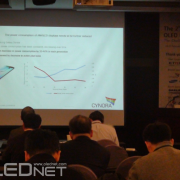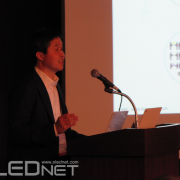CYNORA focuses on blue TADF-materials
During the 2nd OLED Korea Conference, the Germany-based CYNORA has presented its current status in blue TADF-based OLED-emitter development.
CYNORA focuses on materials that are able to convert triplet excitons into light via Thermally Activated Delayed Fluorescence (TADF). While efficient emitters for red and green are already commercially available from other suppliers, there is still no blue OLED material available to match the strong demand for the industry. TADF technology is a promising candidate for highly efficient and stable blue emitter systems. TADF-based emitters offer up to four times better efficiency than currently used materials, which are based on fluorescence.
CYNORA has shown its current TADF-materials for sampling with good color points in blue (CIE 0.16, 0.17) and sky-blue (CIE 0.19, 0.36). The presented materials confirm that blue emission and high efficiency can be combined. CYNORA is focusing its current material development on vacuum-processing following the customer request, as represented in large investments into this deposition technology by the major AMOLED displays makers.
In order to provide more sample materials to customers, while reducing the cycle times for material improvements, CYNORA is growing its infrastructure. The company is extending the device testing capacity by setting up a new cluster tool and hiring continuous experts for the synthesis and device department. Due these actions CYNORA’s emitter throughput will increase significantly.
The strong interest from the OLED industry in TADF-based blue emitters systems has been once more confirmed at this UBI event and allowed CYNORA to further extend its network with the Korean OLED community. The present expansion of CYNORA management operations, consistently sampling and improvement of blue OLED materials are further strengthening the position of CYNORA as a technology leader in the field of TADF emitter systems.



